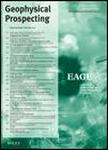版权所有:内蒙古大学图书馆 技术提供:维普资讯• 智图
内蒙古自治区呼和浩特市赛罕区大学西街235号 邮编: 010021

作者机构:China Univ Geosci Wuhan Key Lab Theory & Technol Petr Explorat & Dev Hubei Hubei Peoples R China
出 版 物:《GEOPHYSICAL PROSPECTING》 (Geophys. Prospect.)
年 卷 期:2025年第73卷第2期
页 面:523-542页
核心收录:
学科分类:07[理学] 0708[理学-地球物理学]
基 金:National Natural Science Foundation of China China Scholarship Council 42202171
主 题:fault identification fault interpretation data processing deep learning seismics seismic images seismic resolution
摘 要:High-quality seismic data play a crucial role in accurately interpreting tectonic and lithologic features such as small faults, river margins and thin beds. Over the past decades, researchers have developed numerous methods to enhance seismic resolution and signal-to-noise ratio. However, the benefits of quality-improved seismic data for seismic interpretation have received limited attention. In response, we propose a generative adversarial network-based algorithm to enhance seismic quality and assess how this algorithm improves the accuracy of both machine learning-based and manual fault identification. For machine learning-based fault identification, we integrate a resolution enhancement and noise attenuation neural network (HRNet) with a fault identification neural network (FaultNet). A raw seismic image is first fed into the trained HRNet to obtain a resolution-enhanced and noise-suppressed image, which is then input into the trained FaultNet to produce the high-resolution fault probability map. For manual fault identification, we enlisted three interpreters with geophysical backgrounds to annotate faults on seismic images both before and after HRNet enhancement. Comparison experiments on three field seismic samples show that our method generates more accurate, cleaner and sharper fault probability maps than directly feeding raw seismic images into FaultNet. In addition, our workflow outperforms both the milestone fault identification method and state-of-the-art Transformer-based neural networks, particularly in detecting small-scale faults. Furthermore, the HRNet-enhanced seismic images help interpreters identify small- and medium-scale faults with reduced uncertainty. In the future, HRNet-enhanced seismic data can be applied to a broader range of high-precision seismic interpretation tasks, including horizon picking, channel boundary detection and attribute inversion.